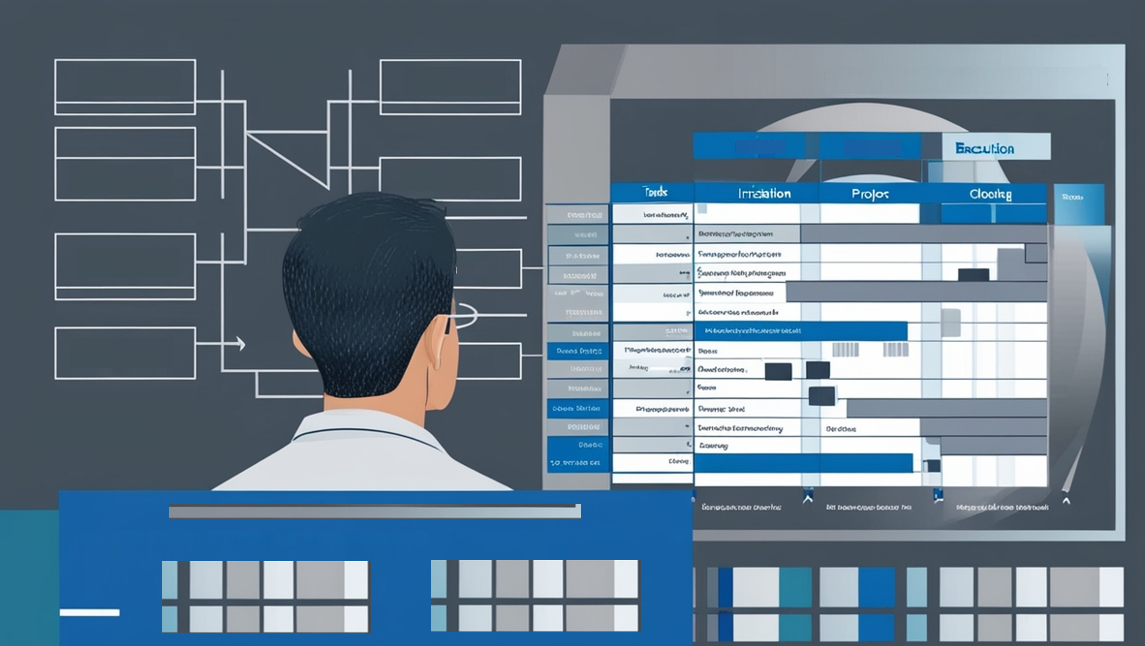Managing IT projects is a complex task that requires more than just technical know-how; it demands a structured approach to ensure that projects are completed on time, within scope, and aligned with organizational goals. This IT project management framework provides a proven methodology for guiding projects from planning to successful delivery. This comprehensive framework is designed to help organizations of all sizes and across industries standardize their project management processes, reducing risks and increasing the likelihood of success.
Many organizations today face growing pressure to deliver IT projects that meet business objectives while navigating increasingly complex regulatory environments. With projects involving multiple teams, stakeholders, and shifting priorities, the need for a clear process becomes critical. Additionally, managing IT projects effectively can impact everything from operational efficiency to profitability. However, without a defined structure, organizations often struggle to maintain alignment between their IT initiatives and their overarching business goals.
The biggest challenge many IT leaders face is the lack of a standardized approach to managing projects, leading to inconsistent outcomes. IT project managers often deal with unclear project scopes, misallocated resources, and missed deadlines. Even when project goals are initially well-defined, they can quickly become muddled due to poor governance and insufficient oversight. The absence of standardized templates, clear roles, and consistent checkpoints results in teams working in silos, which can derail even the most promising initiatives.
These challenges are further aggravated when project managers attempt to navigate shifting priorities or when unexpected risks arise. The lack of clear governance can cause decision bottlenecks, and unanticipated resource constraints can leave projects stuck in limbo. Without a framework in place, communication between teams falters, and stakeholders can lose confidence in the project's direction. This lack of structure often leads to a frustrating cycle of delays, budget overruns, and incomplete deliverables—an outcome that no organization can afford.
Implementing an IT project management framework resolves these issues by offering a step-by-step process that ensures consistency and accountability across all phases of a project. This framework includes pre-defined templates for tasks such as planning, risk management, and resource allocation, along with governance checkpoints to ensure that each phase is completed correctly before moving on to the next. Additionally, it defines clear roles for project managers, stakeholders, and team members, enabling more effective communication and decision-making. With standardized tools and a structured approach, the framework allows project managers to minimize risks, stay on budget, and meet business objectives.
In a highly regulated environment, a solid IT project management framework is not just beneficial but essential for ensuring the success of IT projects. By standardizing project execution from planning to delivery, organizations can mitigate the risks of project failure, ensure alignment with strategic goals, and improve overall efficiency. Whether an organization is looking to manage small-scale initiatives or complex, enterprise-wide projects, this framework provides the tools needed to ensure consistent success.
Main Contents
- Project Lifecycle Phases: Covers the complete project lifecycle, including identification, initiation, planning, execution, and closeout, with governance gates at each phase.
- Roles and Responsibilities: Clearly defines the roles of project sponsors, managers, stakeholders, and teams to ensure accountability and effective communication.
- Standardized Templates: Provides a set of templates to ensure consistent documentation and reporting throughout the project lifecycle.
- Project Types: Explains different types of IT projects (Standard, Light, and Iterative) and the specific governance and documentation required for each.
- Governance and Reporting: Details the importance of governance checkpoints and reporting mechanisms for tracking progress and ensuring project alignment with business goals.
Key Takeaways
- A clear and structured project lifecycle is essential for guiding IT projects from planning to successful delivery.
- Defining roles and responsibilities upfront ensures smooth communication and accountability throughout the project.
- Using standardized templates helps maintain consistency and improves project documentation and tracking.
- Different projects require different approaches, making it critical to choose the correct project type based on scope and complexity.
- Regular governance checkpoints and progress reports ensure that projects stay aligned with business objectives and comply with regulatory standards.
CIOs and IT leaders are often tasked with overseeing complex projects that involve multiple teams, tight budgets, and high expectations. This IT project management framework offers a structured approach to solving many of the common challenges these leaders face, such as misaligned priorities, resource constraints, and poor communication. By adopting this framework, CIOs can ensure that their IT projects are not only completed successfully but also aligned with broader organizational goals.
- Improved Project Governance: The framework introduces governance gates that help IT leaders establish clear checkpoints, ensuring each project phase is reviewed and approved before progressing. This helps prevent scope creep and ensures accountability at every level.
- Resource Optimization: CIOs can use the standardized templates and planning documents to accurately forecast resource needs and allocate them more efficiently, avoiding common pitfalls like over-committing staff or underestimating project complexity.
- Risk Management: With a clear focus on risk identification and mitigation, this framework allows IT leaders to proactively manage risks. It provides tools to track potential issues and address them before they escalate, ensuring smoother project execution.
- Enhanced Communication and Collaboration: The framework defines clear roles and responsibilities, helping CIOs foster better communication across teams. This clarity ensures that stakeholders, project managers, and team members are on the same page, reducing the chance of miscommunication.
- Alignment with Business Goals: By following this framework, IT leaders can ensure that every project stays aligned with organizational objectives, thanks to well-documented planning and delivery phases that incorporate business goals into the project lifecycle.

